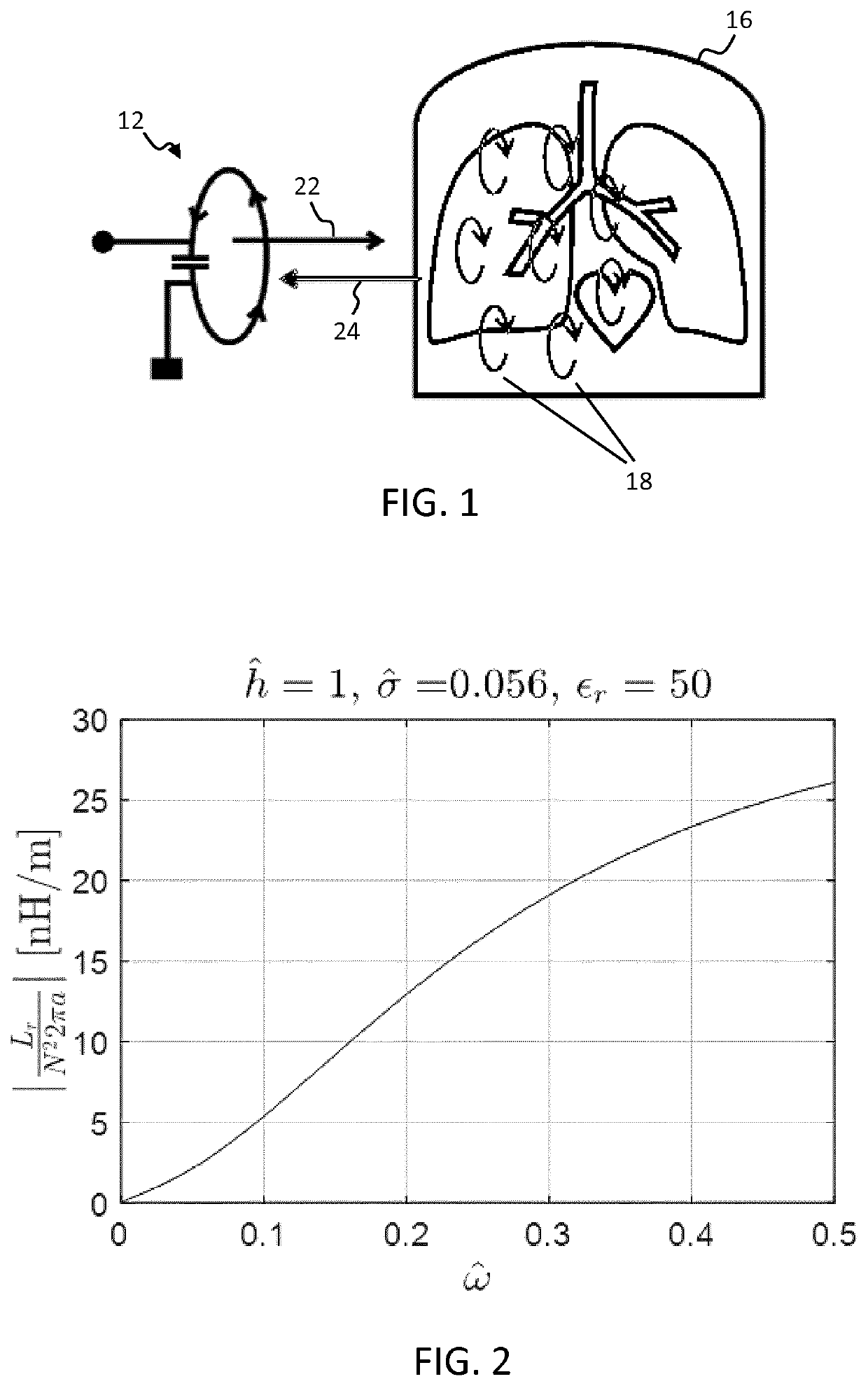Inductive sensing system for sensing electromagnetic signals from a body
a sensing system and electromagnetic technology, applied in medical science, diagnostics, auscultation instruments, etc., can solve the problems of inability to adopt a technology, inability to achieve inductive sensors, and inability to achieve electromagnetic signals, so as to reduce energy consumption and required computing power, save power, and reduce power.
- Summary
- Abstract
- Description
- Claims
- Application Information
AI Technical Summary
Benefits of technology
Problems solved by technology
Method used
Image
Examples
Embodiment Construction
[0107]The invention provides a magnetic inductive sensing system for sensing electromagnetic signals emitted from a body in response to electromagnetic excitation signals applied to the body. The electromagnetic signals are generated and sensed by the same loop resonator which comprises a single-turn loop antenna and a tuning capacitor. The loop antenna of the resonator and a signal generation means for exciting the resonator to generate excitation signals are together configured so as to optimize the value of a ratio between the radial frequency of the generated electromagnetic excitation signals and a reference frequency of the antenna, where the reference frequency is the frequency for which one wavelength of the generated excitation signals (waves) matches the circumferential length of the antenna. This ratio, which corresponds to a normalized radial frequency of the generated excitation signals, is maintained between a value of 0.025 and 0.50.
[0108]The invention is based on res...
PUM
 Login to View More
Login to View More Abstract
Description
Claims
Application Information
 Login to View More
Login to View More - R&D
- Intellectual Property
- Life Sciences
- Materials
- Tech Scout
- Unparalleled Data Quality
- Higher Quality Content
- 60% Fewer Hallucinations
Browse by: Latest US Patents, China's latest patents, Technical Efficacy Thesaurus, Application Domain, Technology Topic, Popular Technical Reports.
© 2025 PatSnap. All rights reserved.Legal|Privacy policy|Modern Slavery Act Transparency Statement|Sitemap|About US| Contact US: help@patsnap.com



